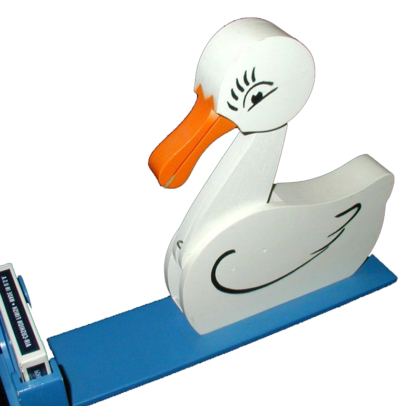
Magic dealers fall into two categories: Those who have been the victim of fraud and those who will be.
When I speak of fraud I don’t mean just credit card fraud. I am including all the ways customers with ill-intentions take advantage of you.
As a website consultant, I have seen far too many dealers lose thousands of dollars from e-commerce fraud and other deceptive tactics.
There isn’t a full-proof solution, but following sound guidelines, and listening to your gut, will help protect you from fraudulent activity.
How Fraud Affects YOU
Under the Fair Credit Billing Act, the customer isn’t liable for unauthorized transactions when their credit card has been stolen. As the magic store owner, you need to provide adequate evidence to prove the customer placed and received the order. Without appropriate proof, the fraudulent transaction falls on you to refund payment.
Data from 2017 shows that merchants lost $2.40 for every dollar of fraud taken by a scammer. Every time a consumer requests a charge-back, you the merchant, absorb a fee ranging from $20 to $100 per transaction which can quickly make disputing the charge-back an expensive process.
Types of Fraud
Nearly all magic dealers have experienced fraud.
While most people look at credit card fraud from the customer’s point of view when the customer’s credit card is stolen, the merchant can suffer significant loss in money, merchandise, time and reputation, from which they may never fully recover.
Since credit card processors tend to side with the customer when a dispute arises, the best solution is sniffing out fraud before it’s too late.
Online fraud is becoming more sophisticated with numerous techniques in play (too many to discuss in this post).
Here are the most common types of fraud to be aware of:
Downloadable Products
Downloads present a “fast-fraud” opportunity because the transactions are instant and the customer can remain anonymous since no shipping address is required. Once the download is received by the purchaser there is no getting it back.
Online Gift Vouchers
Online gift vouchers are a magnet for fraud. Scammers quickly amass hundreds of dollars in gift cards and then promptly sell them. You, the magic store owner, will still have to honor the voucher at its full value, plus absorb the fees and fines when the chargebacks arise.
One of the most popular uses for online gift vouchers is to test the validity of a stolen credit card without drawing attention because gift vouchers can be purchased in small denominations. Once validated, the same card is then used to make larger purchases.
Chargeback Fraud
 Also known as friendly-fraud (What?!), chargeback fraud occurs when a customer, usually new, makes a significant purchase of magic products with a credit card or debit card and then, upon receiving the goods, claims the card was stolen and initiates a charge-back.
Also known as friendly-fraud (What?!), chargeback fraud occurs when a customer, usually new, makes a significant purchase of magic products with a credit card or debit card and then, upon receiving the goods, claims the card was stolen and initiates a charge-back.
This is a tough one to contest. You need to have your ducks in a row. (Call the most famous duck, Dickie aka Jo-Anne, pictured on the right, to help you or read on.)
Red Flags That Help Identify Fraud
 Your gut should tighten when you see ANY of the following warning signs. A single sign might not indicate fraud but more than one should grab your attention. Follow up!
Your gut should tighten when you see ANY of the following warning signs. A single sign might not indicate fraud but more than one should grab your attention. Follow up!
Basic Customer Information
- Customer’s name doesn’t match name on credit card or PayPal account.
- Customer’s address doesn’t match the cardholder address when you obtain an address verifcation (see below).
- Address does not exist. For example, a city and state that don’t belong together.
- Shipping address doesn’t match billing address (small flag because it can also be perfectly legimate).
- Mispelling of customer name.
- Customer uses a generic email name such as [email protected] or [email protected]. Since generic emails (outlook.com, gmail.com, etc.) can be created anonymously they are often used by scammers.
 Order & Payment Information
Order & Payment Information
- The order is for an unusually large amount of magic, especially if it is a new customer. If your average order size is $100, a new order for $1,000.00 should set off alarm bells. Call the new customer under the premise of welcoming him and confirm his billing and shipping address. Scammers rarely have a valid contact number.
- A credit card has been attempted several times.
- A customer tries lower dollar transactions after a decline message has been received. This indicates the customer is looking for a transaction amount that will be approved.
- The customer requests products to be expedited.
- You receive multiple transactions with the same shipping address but paid with different credit cards.
- Several orders have been placed with the same BIN but different card numbers. The BIN is the first 6 digits (moving to the first 8 by 2022) of a credit card number and can be used to identify the bank branch from which the card was issued. It’s rare to receive the same BIN twice and could indicate a series of cards that have been compromised. (Read on about how to check the BIN number.)
- If the email address matches the cardholder name but has random characters added at the end of the name be wary. For example, [email protected].
Digital Products (Gift Vouchers and Downloads)
- Watch out for new email addresses or invalid email addresses. They could be signs that someone is testing the validity of a stolen card.
- Nonsensical customer names are a BIG flag. For example, har0adjfas
- Several credit cards were attempted and declined before a successful order.
- For digital products, the email address acts as a shipping address. Submit the email into an email verification tool to see if the email has been used for a while or created for fraudulent activity.
Steps to Prevent Fraud
 If you have gone through the above checklist and your spidey senses are tingling, take immediate action.
If you have gone through the above checklist and your spidey senses are tingling, take immediate action.
Phone the Customer
Call the customer to welcome him and have him verify his shipping and billing address. Fraudulent orders usually don’t have a valid contact number. If you’re suspicious and unable to reach the customer, I recommend you refund the order to avoid charge-backs or theft of goods not paid for.
Check For a Valid Email Address
Check the validity of the customer’s email using an Email Checker (here’s one of many online options).
Email-Checker.Net
Email Checker is a free tool for verifying an email address. Enter the email address and hit the check button. It tells you whether the email address is real or not. Sometimes, it’s unable to correctly predict and will say unknown because some email providers have added restrictions or choose not to allow validation checks on their mailboxes.
Check the BIN number
If you see several credit card transactions using the same first 6 digits, do a search at BinBase to determine the issuing bank branch. Contact the card-issuing bank to validate the name and billing address.
BinBase.com
BinBase.com provides a virtual BIN lookup for merchants, payment processors, collection agencies and fraud prevention specialists. You’re guaranteed to find accurate and complete information for credit, debit, prepaid, reloadable, virtual, gift cards and other card types when you utilize their database.
BinBase.com is created to provide financial protection for many industries. They make it easy to minimize fraud and financial loss associated with electronic card purchases.
Shipping the Order
Large magic orders should be shipped with a required signature to prove your customer has received the products. Use tracking numbers to defend against chargeback fraud so you have records of the shipping address and notice of delivery.
Delay shipping the order until the funds have been deposited in your bank. At that point you can call the customer and let him know the order will be shipped shortly.
Check the shipping address on Google Maps to make sure the address isn’t an anonymous box at a UPS store or mail store. You can also split the order into two or more shipments with a delay between them to help reduce chargeback loss.
Keep Records and Clear Documentation
Retain accurate records of any communications (and attempted communications) detailing your efforts to satisfy the customer.
Save all documentation pertaining to the payment and delivery of the order.
Strengthen Your Website
On your website, ensure delivery and payment policies, including return fees, refund processing and any other fees are stated clearly and easily found by a customer.
Make sure that the name of your magic store is displayed on the payment receipt, billing statement and packing slip. If you are using a personal PayPal account, or your magic store operates under a parent company, the customer will not see your Merchant name on the payment receipt or in their bank records. Clearly communicate to the customer that their payment transactions will be billed through a different name.
Enforce STRONG passwords. Too many customers use passwords that can be hacked in seconds. If a customer’s account is breached you could be responsible for the customer’s purchases on your store.
Premium Magic Network takes security SERIOUSLY. We enforce strict password requirements for all website users as one of the many security protocols we use.
Take Action To Protect Your Business

Does your website security look a little out-dated?
We are fanatics about website security and performance.
Contact us to find out how we help magic dealers, just like you, generate more revenue and help keep your business safe.
